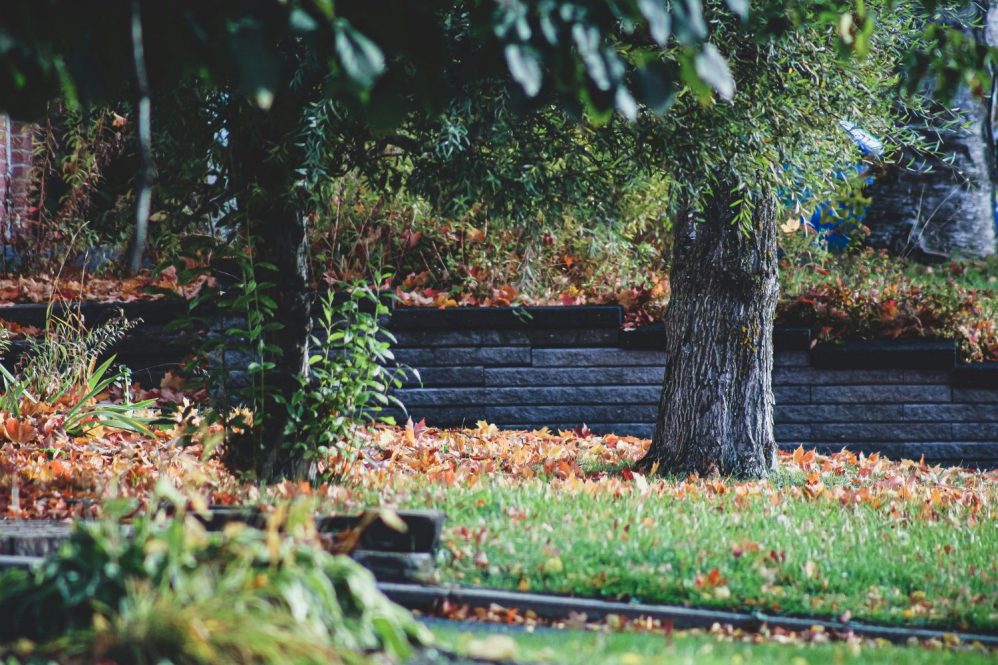Winter may be coming, but there's still time to get your garden in good shape for next year's growing season

Sigmund for Unsplash
It's November. Has the unusually warm, dry weather we've been having lulled you into complacency when it comes to preparing your garden for the winter? Worry not, there's still time to make sure you're ready for the expected colder months ahead - and for the next spring.
If the process seems overwhelming to you, break it down into manageable pieces that can be addressed separately. Categories might include some of the following: bulbs, lawn, ornamentals, vegetable garden, trees and shrubs, and winter interest.
First, though, don't rush the season! If you're just starting now, you've already followed this advice, but it applies to any year. Even in previous "normal" autumns working outside is still pleasant through mid-November. By stretching the tasks out over time, you avoid feeling like it's a chore. Here are tasks that can help your garden this fall and winter.
- Start small. You don't need to clean everything to bare earth, either. Leaving some ornamental plant material standing provides habitat for local wildlife and can provide winter interest. If you have some tall ornamental grasses, they can provide visual interest throughout the colder months before being cut back in the spring. Plants with seedheads can offer winter food for birds.
- Think spring. Now is the time to plant spring-blooming bulbs. They'll settle in over the winter, sending out roots, waiting to reward you with welcome color that ushers in the spring. Crocus, scilla, chionodoxa, and winter aconite are early bloomers, followed by daffodils, tulips, and some early alliums. These actually shouldn't be planted much earlier than now, as we don't want them starting to grow yet.
- Remove annuals. Most annuals are done, having succumbed to one of the few killing frosts we've had, so pull them up and compost them. There are still some perennials in bloom that are late-season stars - asters, some perennial chrysanthemums - and many plants have great fall color, such as amsonia (blue star).
- Add foliage. Your plants may only bloom for a brief period of time each year, so the foliage is an important consideration for the rest of the season. Research what the foliage of a plant will do in the fall and incorporate that into your garden design. Plants such as geranium (cranesbill), heuchera (coral bells), and oakleaf hydrangea provide a great second show as the temperatures cool. Many of the ornamental grasses produce seedheads in the fall for an added burst of interest.
- Address perennials. You may be used to cutting all your perennials back each fall but consider leaving some standing through the winter. Tall sturdy plants such as sedum ("Autumn Joy") hold up well into the winter and their flat seedheads offer visual interest, especially on a frosty morning.
If you have tender perennials such as dahlias or cannas you will need to overwinter them inside. In the late fall, ideally after a hard frost, dig up the bulbs or tubers and clean them off. Once dry, store them in a cool, dry, dark location. Temperatures between 45 and 55 degrees are ideal, but you have some flexibility. Just don't let them freeze! They can be stored in a paper bag. Check on them in late winter. If they're showing some mold, open the bag to air them out a bit. If they're looking a little dry, a spritz of water will help.
- Address drought conditions. One important factor this year is the drought. Evergreens need to go into winter well hydrated because they continue to transpire throughout the winter. Give them a good soak now and again in a week or so if we still haven't had rain. Any newly planted material should also be watered until the ground freezes.
- Clean the vegetable garden. We want to leave some plant material in the ornamental garden, but your vegetable garden is a different matter. Clean that up completely and remove any dead material so pests and diseases don't overwinter. If you haven't done so recently, now is a great time for a soil test. You can add any needed amendments and let them incorporate over the winter.
- Add winter components. Finally, consider the winter garden. If you don't already have trees and shrubs that provide visual interest, use the winter to plan where you might want to add something to brighten up your view. Berries and bark are great winter assets. Many trees have exfoliating bark, such as birches and paperbark maple. Red-stemmed dogwood is a bright splash in the landscape, winterberry provides red, orange, or yellow berries and many viburnums have great seeds.
Winter approaches, and it's an excellent time to take stock of your current garden and develop plans for the next gardening season. Take a close look at your gardens as you clean them up and take notes - and pictures - of areas you might want to work on next year. Those notes will help guide your plant choices as you peruse those catalogs this winter.
Sarah Bailey serves as the UConn Master Gardener program coordinator. The UConn Master Gardener program is administered through UConn Extension and provides educational outreach that empowers individuals with horticultural knowledge and fosters community engagement.






